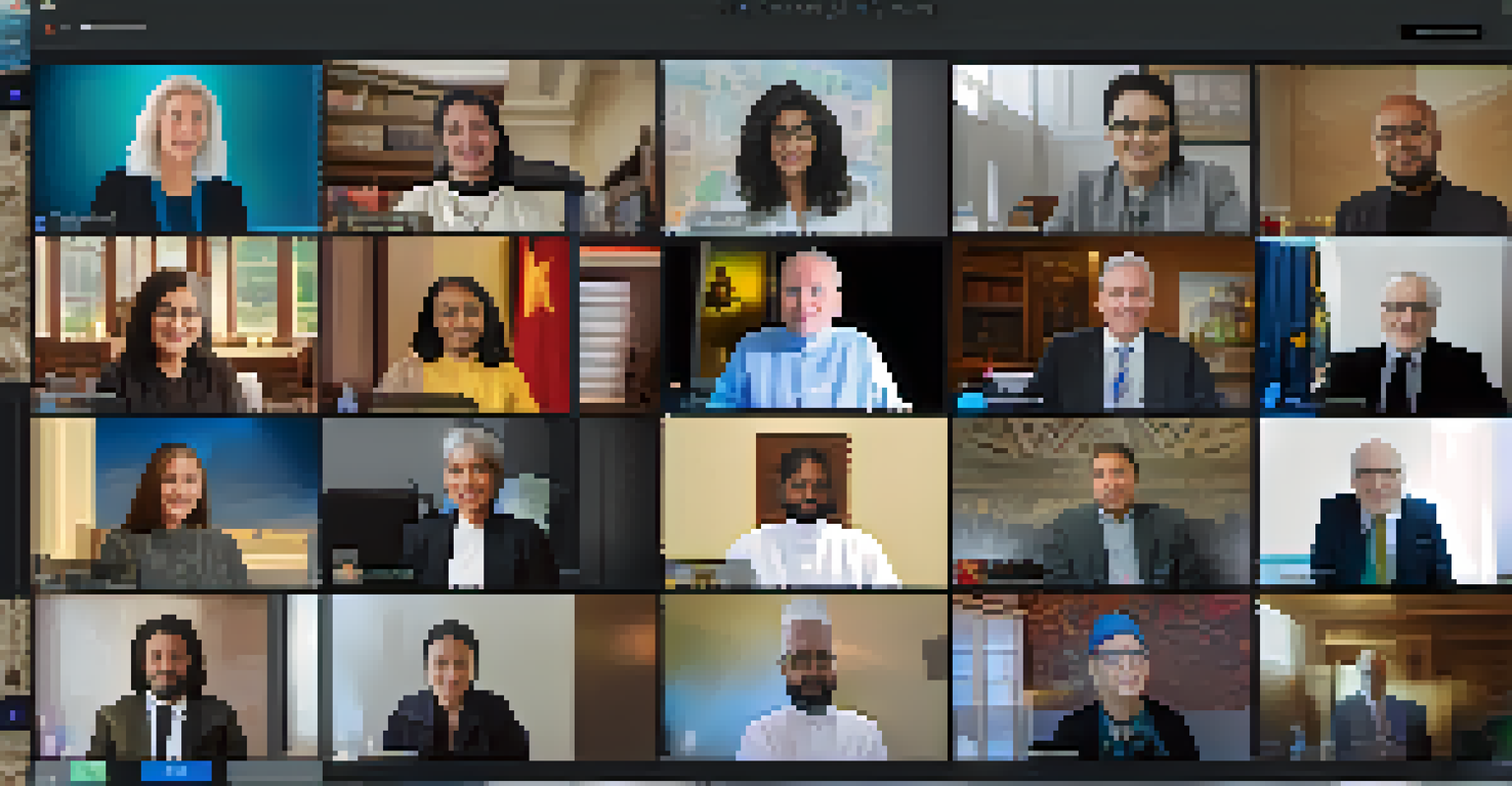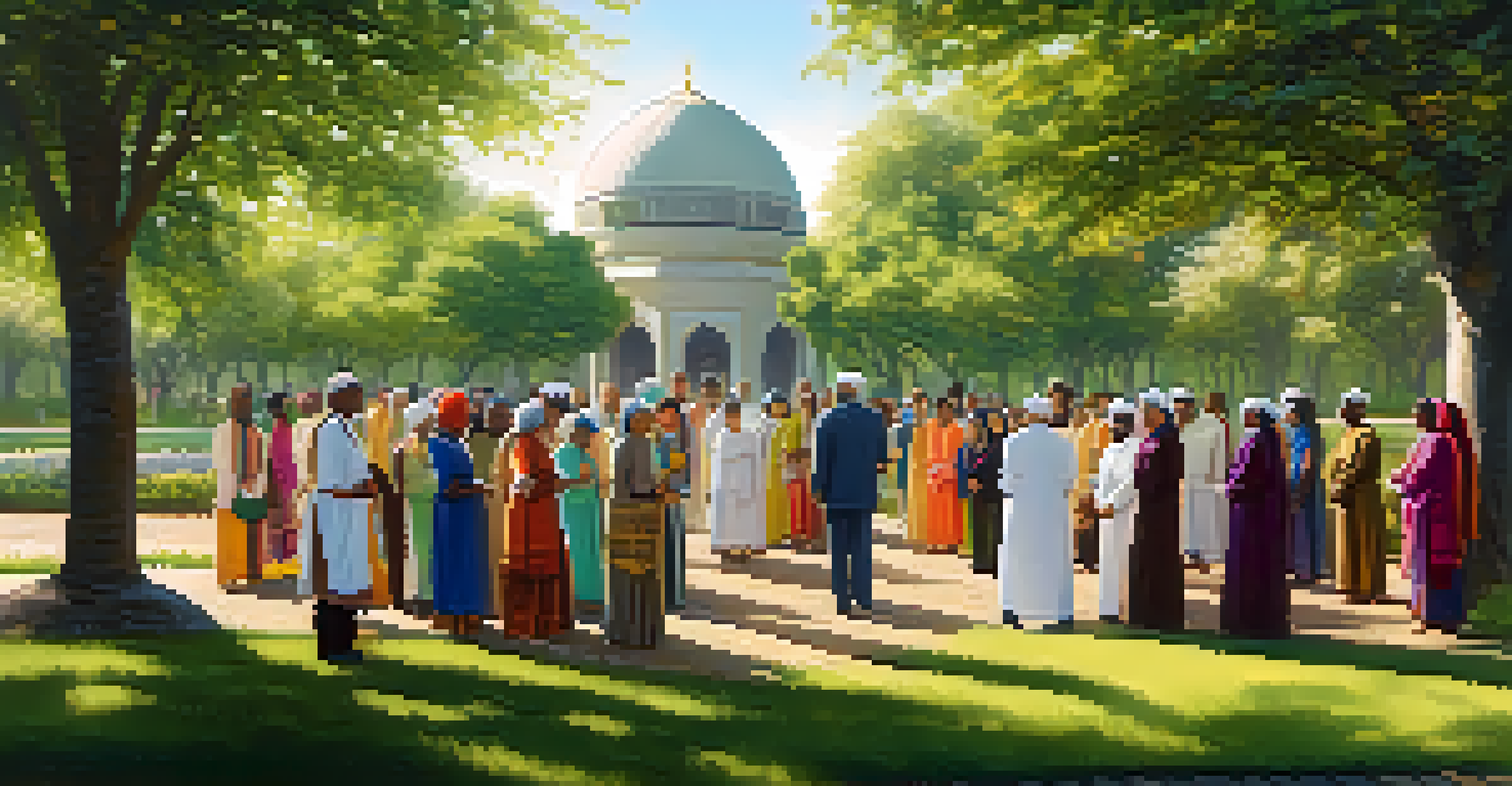Building Bridges: Interfaith Dialogue in Conflict Zones

Understanding Interfaith Dialogue and Its Importance
Interfaith dialogue refers to conversations between different religious groups, aimed at fostering understanding and respect. It’s a vital tool in conflict zones where religious differences can exacerbate tensions. By engaging in dialogue, communities can find common ground and work towards peaceful coexistence.
Dialogue is the most effective way of resolving conflict and breaking down barriers.
The importance of interfaith dialogue lies in its ability to humanize the 'other.' When individuals share their beliefs and experiences, they often discover shared values and aspirations. This process not only reduces prejudice but also builds trust among diverse communities.
In conflict zones, where fear and misunderstanding can lead to violence, interfaith dialogue acts as a bridge. It provides a platform for collaboration, enabling groups to address grievances together rather than allowing differences to drive them apart.
Historical Examples of Successful Interfaith Initiatives
Looking back at history, several interfaith initiatives have shown remarkable success in promoting peace. For instance, the 1990s interfaith movement in Bosnia brought together Muslim, Orthodox Christian, and Catholic leaders to address the violent ethnic conflict. Their discussions laid the groundwork for peace and reconciliation efforts.

Another example is the 'Parents Circle,' a project in Israel and Palestine where bereaved families from both sides come together. Sharing their stories of loss has helped participants see beyond labels and foster empathy, which is crucial in conflict resolution.
Interfaith Dialogue Fosters Peace
Engaging in interfaith dialogue helps communities find common ground and promotes peaceful coexistence.
These historical examples illustrate that interfaith dialogue is not just theoretical; it has practical applications that can lead to real change. They remind us that even in the darkest times, collaboration across faiths can illuminate paths to peace.
Challenges Faced in Interfaith Dialogue
While interfaith dialogue holds promise, it is not without challenges. Deep-rooted prejudices and historical grievances can hinder open conversations. Participants may enter discussions with preconceived notions, making genuine dialogue difficult.
Peace is not merely the absence of war. It is also a state of mind, a state of heart and soul.
Another challenge is the power dynamics often present in conflict zones. In many cases, one faith community may dominate the conversation, marginalizing others. This imbalance can lead to feelings of resentment and distrust, undermining the dialogue's effectiveness.
Despite these challenges, it’s essential to address them head-on. By creating safe spaces for dialogue and ensuring that all voices are heard, communities can work towards overcoming these barriers and fostering meaningful connections.
The Role of Education in Promoting Interfaith Dialogue
Education plays a pivotal role in nurturing interfaith dialogue, especially in conflict zones. Teaching young people about different religions fosters respect and understanding from an early age. This foundation can help break cycles of ignorance and prejudice that fuel conflict.
Programs that encourage youth to engage with peers from different faith backgrounds can cultivate friendships and shared experiences. For example, interfaith school projects where students collaborate on community service initiatives can promote teamwork and cultural exchange.
Education Breaks Down Barriers
Teaching young people about different religions fosters respect and understanding, helping to break cycles of ignorance.
By embedding interfaith understanding in educational curricula, communities can create a generation more equipped to handle differences peacefully. Education is not just about academics; it's about building bridges and fostering a culture of dialogue.
How Technology Facilitates Interfaith Dialogue
In today’s digital age, technology serves as a powerful tool for fostering interfaith dialogue. Social media platforms allow individuals from diverse backgrounds to connect, share experiences, and engage in discussions. This virtual interaction can transcend geographical barriers, allowing for global conversations.
Webinars and online forums dedicated to interfaith issues have become increasingly popular, enabling participants to learn from international experts and share local perspectives. These platforms create opportunities for dialogue that might not be possible in person due to safety concerns in conflict zones.
Moreover, technology can help amplify marginalized voices, ensuring that diverse perspectives are included in the conversation. By leveraging technology, communities can create a more inclusive and vibrant dialogue that fosters understanding and peace.
Local Leaders: The Key to Successful Interfaith Initiatives
Local leaders play a crucial role in the success of interfaith initiatives. They understand the unique cultural and religious dynamics of their communities and can guide discussions in ways that resonate with local values. Their involvement lends credibility and fosters trust among participants.
These leaders often act as mediators, helping to navigate sensitive topics and ensuring that all voices are heard. Their presence can help alleviate fears and encourage participation from groups that may feel marginalized or threatened.
Technology Enhances Dialogue Reach
Digital platforms enable diverse groups to connect and share experiences, promoting global interfaith discussions.
By empowering local leaders to facilitate interfaith dialogue, communities can create a more sustainable model for peacebuilding. Their grassroots efforts can lead to lasting relationships and collaborations that transcend religious boundaries.
The Future of Interfaith Dialogue in Conflict Zones
Looking ahead, the future of interfaith dialogue in conflict zones remains hopeful. As more communities recognize the value of collaboration, we can expect to see an increase in initiatives aimed at building bridges across faiths. This shift is essential for long-term peace and stability.
Global events and crises often highlight the necessity for interfaith cooperation. The growing recognition of our shared humanity can serve as a catalyst for dialogue, encouraging diverse groups to unite for common causes, such as social justice and environmental sustainability.

Ultimately, the future relies on our collective commitment to fostering understanding and dialogue. By investing in interfaith initiatives today, we can pave the way for a more peaceful and harmonious world tomorrow.